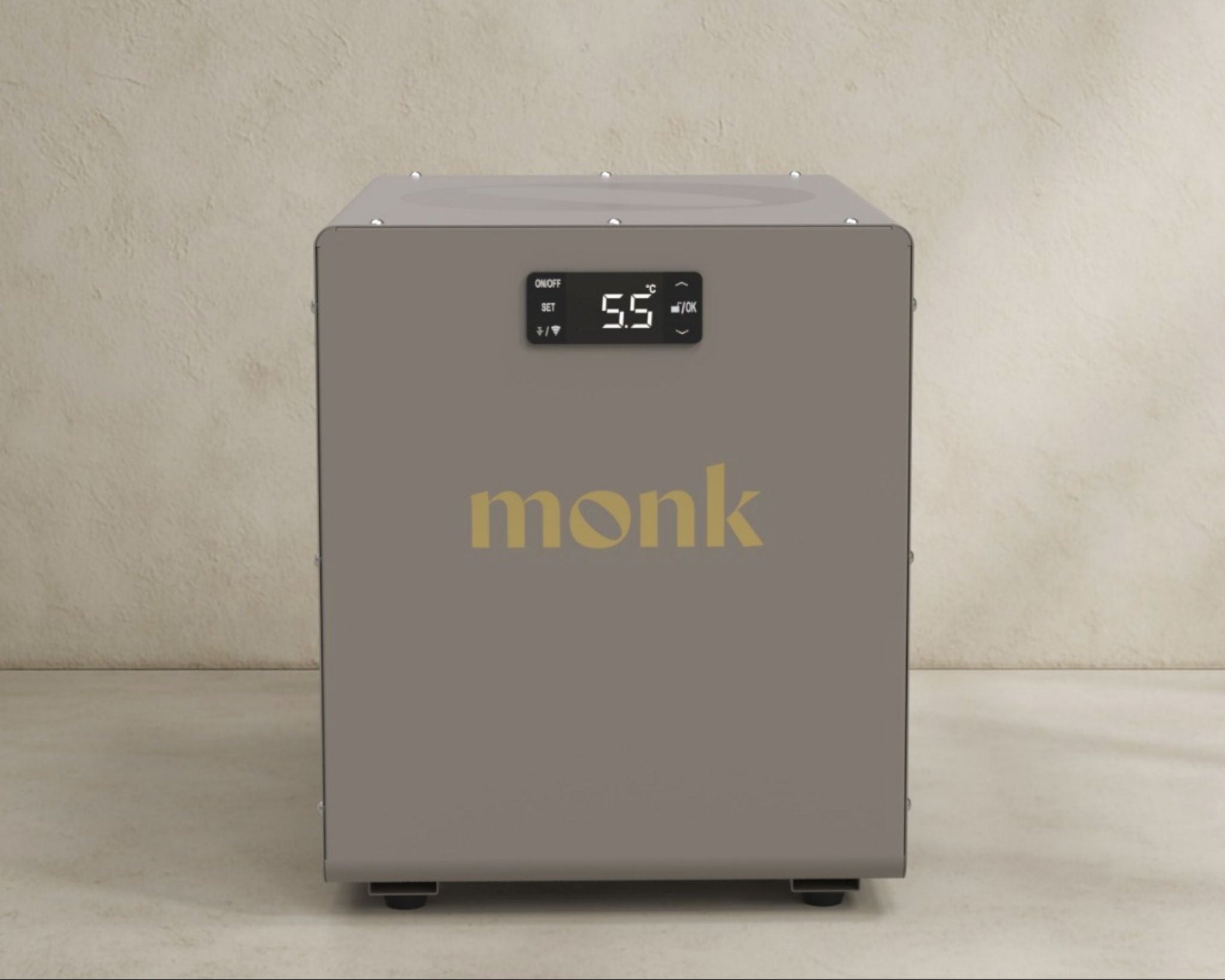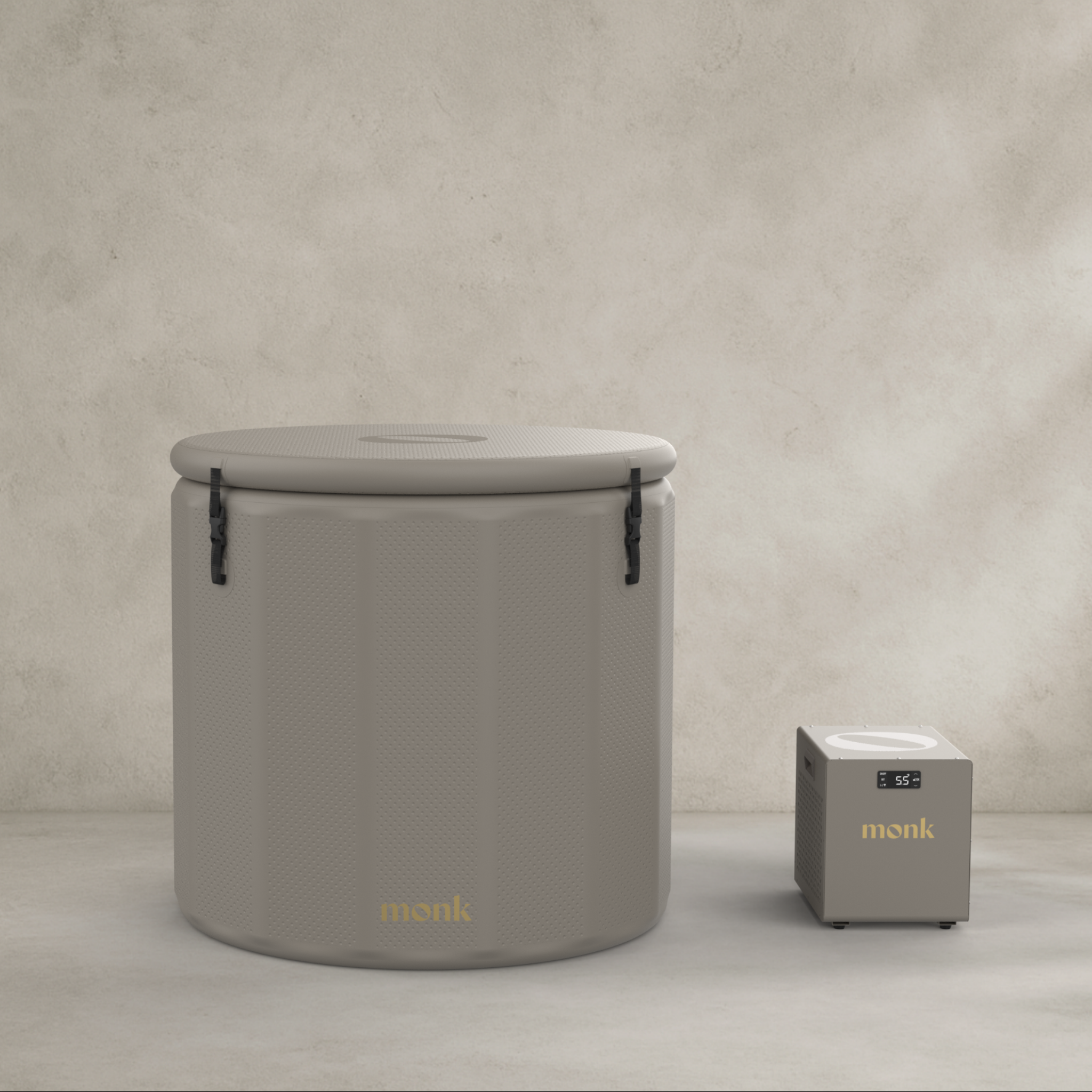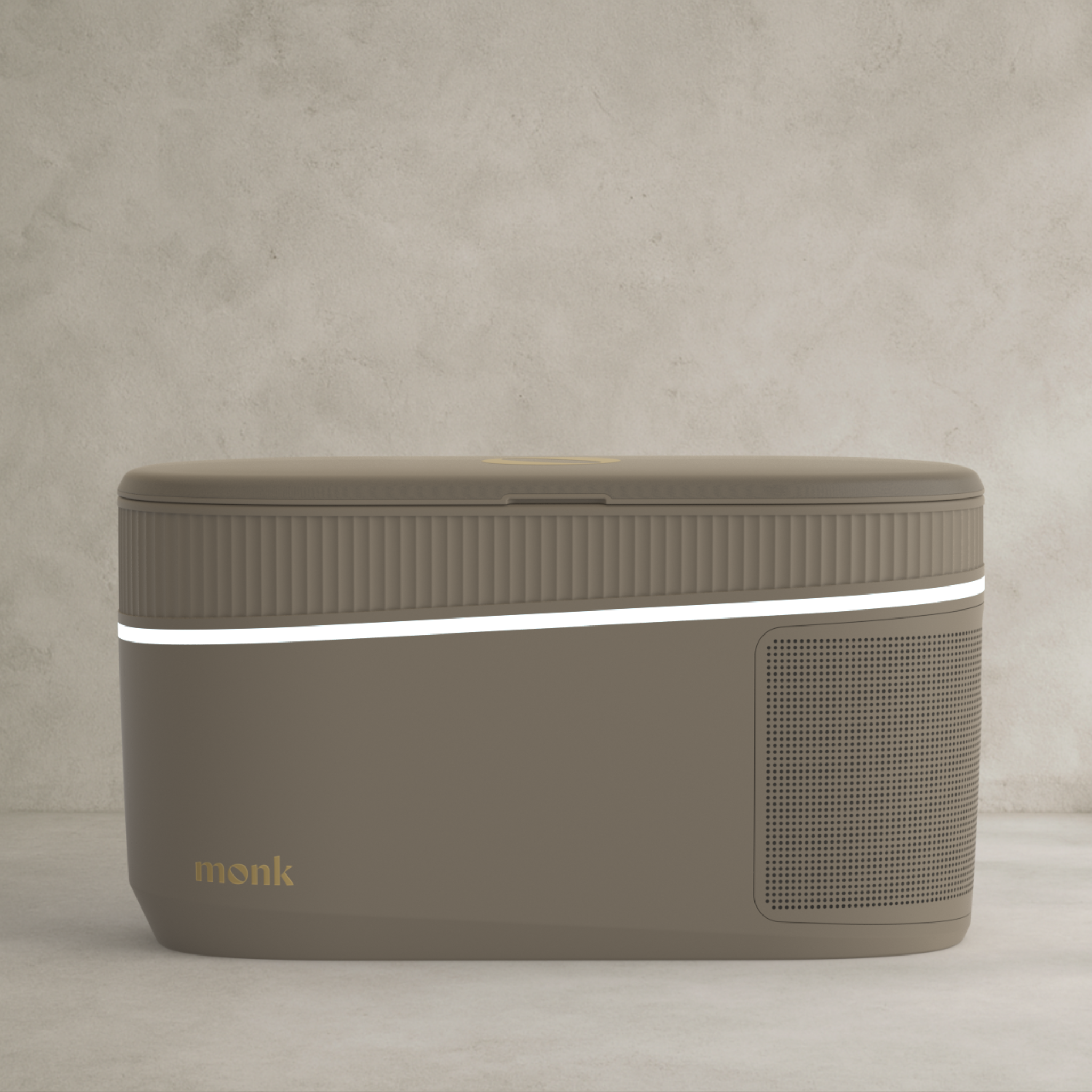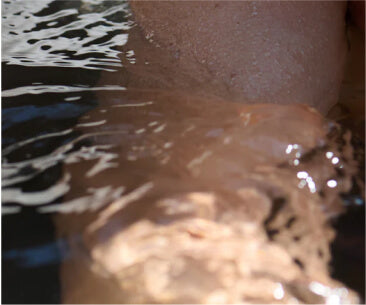Weight loss benefits of cold water therapy
Fat loss is rarely straightforward, because our bodies are complex. There’s a reason why no single weight-loss diet has triumphed above all others, and conditions involving hormonal imbalances, like hypothyroidism, polycystic ovary syndrome and diabetes can often complicate things further. But obesity is still a growing global health crisis that currently has a limited set of tools to address it. Thankfully, recent research has shown the potential for cold water therapy as a way to prevent and treat excessive weight gain and the conditions that are associated with it, which starts with an understanding of the types of fat humans have (yes, there’s more than one).
The differences between White Fat and Brown Fat
White fat or White Adipose Tissue (WAT)
- The most common type of fat for adults
- It insulates and cushions vital organs like the kidneys and the heart
- These tissues are responsible for storing energy, and are the culprits in making us fat, adding inches to our waist and thighs
- It lacks mitochondria, cell energy-producing centres
- It interacts with hormones such as cortisol, the stress hormone, and insulin, the hormone which controls the amount of sugar in our bloodstream at any one moment
- Having a lot of this type of fat is associated with heart disease, diabetes and many types of cancers
Brown fat or Brown Adipose Tissue (BAT)
- Previously thought to only be present in mammals and human babies, to keep them warm, but discovered to be present in human adults in 2009
- Primarily located around your neck and collar bone
- It contains mitochondria, which makes BAT look brown under a microscope (hence the name!) because they contain iron
- Mitochondria contain a protein called UCP1 that breaks down fat to make heat and uncouples mitochondrial respiration from ATP synthesis (in English, that means our bodies prefer to burn brown fat over white fat for heat)
- It’s more closely related to muscle than it is to WAT (reference here and here), being much more vascularised with capillaries and innervated with neurons
- Its main function is thermogenesis, creating heat to raise body temperature by burning energy
- As a result, it burns through calories at quite a high rate!
What does this all have to do with cold water therapy? Thermogenesis and the cold stress response are the key.
When we expose our body to cold, it attempts to generate more heat. It can do this one of two ways: first, our bodies begin to shiver. While shivering, our body activates tiny muscle contractions to create kinetic energy, which is then converted into heat energy. Second, our body generates heat by increasing its metabolic demand and burning up stored calories. In this case, it’s BAT that does this, in a process called cold thermogenesis.
Cold Water Therapy, Brown Fat and Thermogenesis
Thermogenesis is a way we produce heat to keep our bodies warm. Cold thermogenesis kicks this process into overdrive. When you’re exposed to colder temperatures, your body works harder to maintain homeostasis and regulate core temperature. It produces more energy to stay warm, burning calories to produce that heat. This in turn stimulates metabolism. Hormones involved in body temperature regulation also play a role in stimulating heat-related fat breakdown, including epinephrine, norepinephrine, and thyroid hormones. In particular, exposure to the cold causes an increase in norepinephrine through upregulation of cold shock proteins – it’s the signalling molecule that ‘switches on’ BAT.
In rodents and humans, various regimens of cold exposure have been repeatedly shown to increase BAT activation, and research has also demonstrated how activated BAT can use glucose and fatty acids as fuel for thermogenesis, enhancing overall energy expenditure in rodents and humans. In one study, a 3-hour period of cold exposure was shown to burn 250 extra calories through BAT, with the calories coming almost exclusively from WAT. Experiencing a drop in temperature also leads to stem cells reportedly making brown instead of white fat, prompting the body to burn extra calories.
In 2014, Dr. Lee undertook the study of BAT at the National Institutes of Health (NIH) in the US, and he found that during cold exposure and exercise, the levels of irisin (produced by shivering muscle) and FGF21 (produced by BAT) rise. These hormones then burn white fat tissue and help you lose weight. Specifically, 10-15 minutes of shivering increases irisin to such a level that it has the same effect as an hour of moderate exercise. Other studies have demonstrated that irisin works to help BAT convert WAT to have similar properties, which improves the glucose tolerance of the body, and consequently can help prevent diabetes. Even more promising for living a long, healthy life, BAT stimulation has been shown to increase several longevity-associated molecules, including irisin and FGF21, but also adiponectin and SIRT1.
Brown fat and insulin
You may have heard about insulin in relation to diabetes, but what is its role in the body, and why can insulin resistance lead to weight gain? Insulin is a hormone that regulates the levels of glucose in the blood, otherwise known as blood sugar levels. Insulin works by helping the body’s cells to absorb glucose. Since insulin is one of the main hormones responsible for lowering your blood sugar levels, being insulin resistant typically means that your blood sugar levels are higher than they should be. It also means that your body stores fat a lot more easily, because insulin promotes fat storage.
According to the mitochondrial theory of insulin resistance, excess energy in the form of glucose enters the cell faster than it can be consumed, creating a blockage of free radicals that damage the mitochondria. This means that shutting down insulin receptors at the cell walls may be the body's desperate attempt to slow the transport of glucose to mitochondria and protect them from further free radical damage. As a result, blood glucose levels remain higher than normal, signalling islet cells in the pancreas to secrete more insulin. Several studies like this have demonstrated that deliberate cold exposure will clear glucose from the bloodstream and improve insulin sensitivity.
Having more BAT has also been shown to support the body with insulin overload, by improving glucose homeostasis and insulin sensitivity. BAT cells draw sugar molecules from the blood, which could help lower the risk of type 2 diabetes, as chronically high levels of blood glucose wreak havoc on the body’s ability to manage those levels in the first place. One study transplanted BAT in mice, which led to improved glucose tolerance, increased insulin sensitivity, reduced body weight and fat mass, and reversal of high fat-diet-induced insulin resistance.
Much more research has shown just how valuable cold exposure can be for tackling insulin resistance, and therefore its potential for prevention and treatment of conditions like type 2 diabetes and obesity. One study found that 10 days of cold acclimation at 14-15oc increased peripheral insulin sensitivity by ~43% in 8 type 2 diabetes subjects, and showed positive effects on whole-body and skeletal muscle which can help to improve overall metabolic health of patients with type 2 diabetes. Some studies are even referring to BAT as ‘antidiabetic tissue’ in humans, with therapeutic potential for ‘beige cells’ in counteracting obesity and its related hepatic insulin resistance and chronic inflammation.
Cold water therapy and metabolism
Your metabolism is how fast your body converts food into energy. The faster and more efficient your metabolism is, the more energy you'll likely have, and the easier you'll find it to lose weight. Cold plunging can aid weight loss by increasing the burning of white fat (a.k.a. “bad fat”). This happens because cold exposure forces your body to rev up your metabolism and get the energy it needs for heat generation (in one study, metabolism increased 350% when participants were exposed to 14oc/57F water). It also starts to use brown fat (a.k.a. “good fat”) to convert into heat energy. The rest of the body that is using energy, unrelated to heat production, starts burning up the "bad fat" and as a result it can create accelerated weight loss.
Higher levels of BAT are associated with a more effective metabolism, and cold temperatures have been shown to push BAT deposits into calorie burning heat generation 25-40% higher than basal metabolic rate. One of the ways research suggests it does this, as well as increasing glucose and lipid uptake, is through mitochondrial uncoupling, resulting in elevated energy expenditure as well as increased insulin sensitivity. BAT also maintains a high oxidative metabolic capacity, and when it is highly active, it exerts beneficial metabolic effects on obesity, insulin resistance, and atherosclerosis (thickening or hardening of the arteries). See studies here and here.
Cold water therapy and hormones
Our metabolism relies on hormones to keep it functioning well, particularly those from our thyroid gland. It releases two hormones: Thyroxine (T4) and Triiodothyronine (T3). When too little of these hormones are released from the thyroid (known as hypothyroidism) it can result in weight gain. Because our thyroid plays such a major role in our metabolism, if it becomes dysfunctional, it can affect almost every part of the body, including our energy levels and the ability to burn calories. Cold plunging is a potential tool for relieving the symptoms of hypothyroidism, because it has been shown to decrease TNF-a and IL-2-pro-inflammatory cytokines. By lowering these cytokines, dysfunction in the thyroid is reduced, and normal secretion of T3 and T4 can continue. In addition, cold water immersion also reduces cortisol levels that can negatively impact hormonal secretions, and lead to hypothyroidism.
BAT and cold exposure may also play a crucial role in healing the hormonal dysfunctions that accompany obesity, in particular the hormone leptin, which is one of the most important regulators of body mass. Leptin acts like a thermostat – or in this case, an ‘adipostat’ – working hard to keep your body mass constant by increasing your appetite when your fat stores are low, and decreasing your appetite when your fat stores are high. People who carry more weight are leptin resistant: their fat mass is producing plenty of leptin, but their body isn’t listening to the leptin signalling. Leptin isn’t the problem at all – it’s the sensitivity of the leptin receptors. Cold exposure has been seen to improve leptin sensitivity, allowing the body to hear the signals again and reach a lower baseline. Research has also shown promise for cold water therapy as a way to override the ‘adipostat’ hypothesis and encourage your body to stop panicking when you lose fat.
Another hormone that releases when you take a cold dip is adiponectin. Low adiponectin levels have been associated with obesity, diabetes and cardiovascular disease. It breaks down fat and shuttles glucose into the muscles, which can lower blood sugar. This not only has an anabolic, muscle repair effect, but it can also enhance recovery, and research has shown that it can have a ‘browning effect’ on WAT (making it function more like BAT).
Testosterone is also a key tool in the fight to lower body fat, because of the way it regulates fat metabolism, glucose and insulin. Testoterone deficient men tend to gain fat more easily than their healthy peers, and on average, obese men have 30% lower testosterone levels than those who are a normal weight, demonstrating the significance of the relationship. When men take a cold plunge, it lowers the temperature of their scrotum, which allows the testicles to produce the maximum amount of sperm and testosterone. One study found that keeping testicular temperature between 31-37oc/88-99oF allowed for optimal DNA, RNA and protein synthesis, which results in better sperm production, and another study found that cold, winter temperatures improved sperm shape and movement. Why does it matter? Because when you improve sperm, you improve testosterone.
Wrapping it up
Losing weight can be a frustrating, time-consuming and even painful pursuit, but there’s incredible promise for cold exposure or cold water therapy as a way to tackle some of the most significant root causes. Along with a bath that can fit comfortably (and stylishly) into any home, Monk’s cold water therapy app will offer science and data-driven protocols to help our users reach a range of goals, including sustainable fat loss and metabolism recovery.
Please note: educational information is not the same as medical or psychological advice. This blog post is reviewing published scientific evidence, and all information on this website is presented for educational and informative purposes only. It is not intended to replace professional, medical, or psychological guidance in any capacity.







